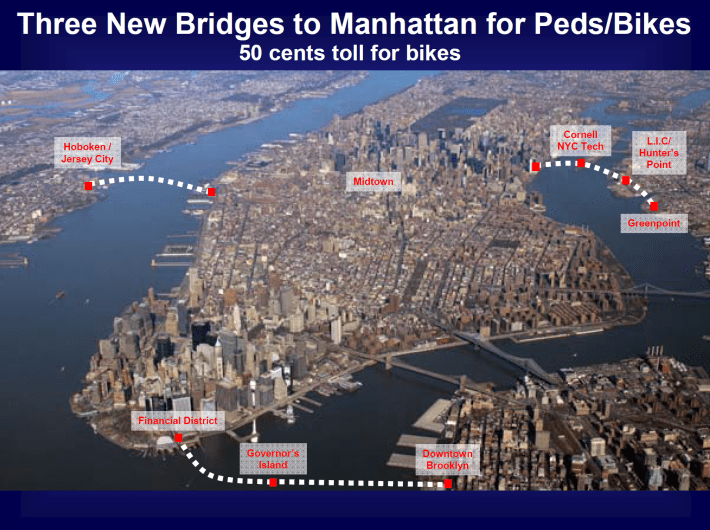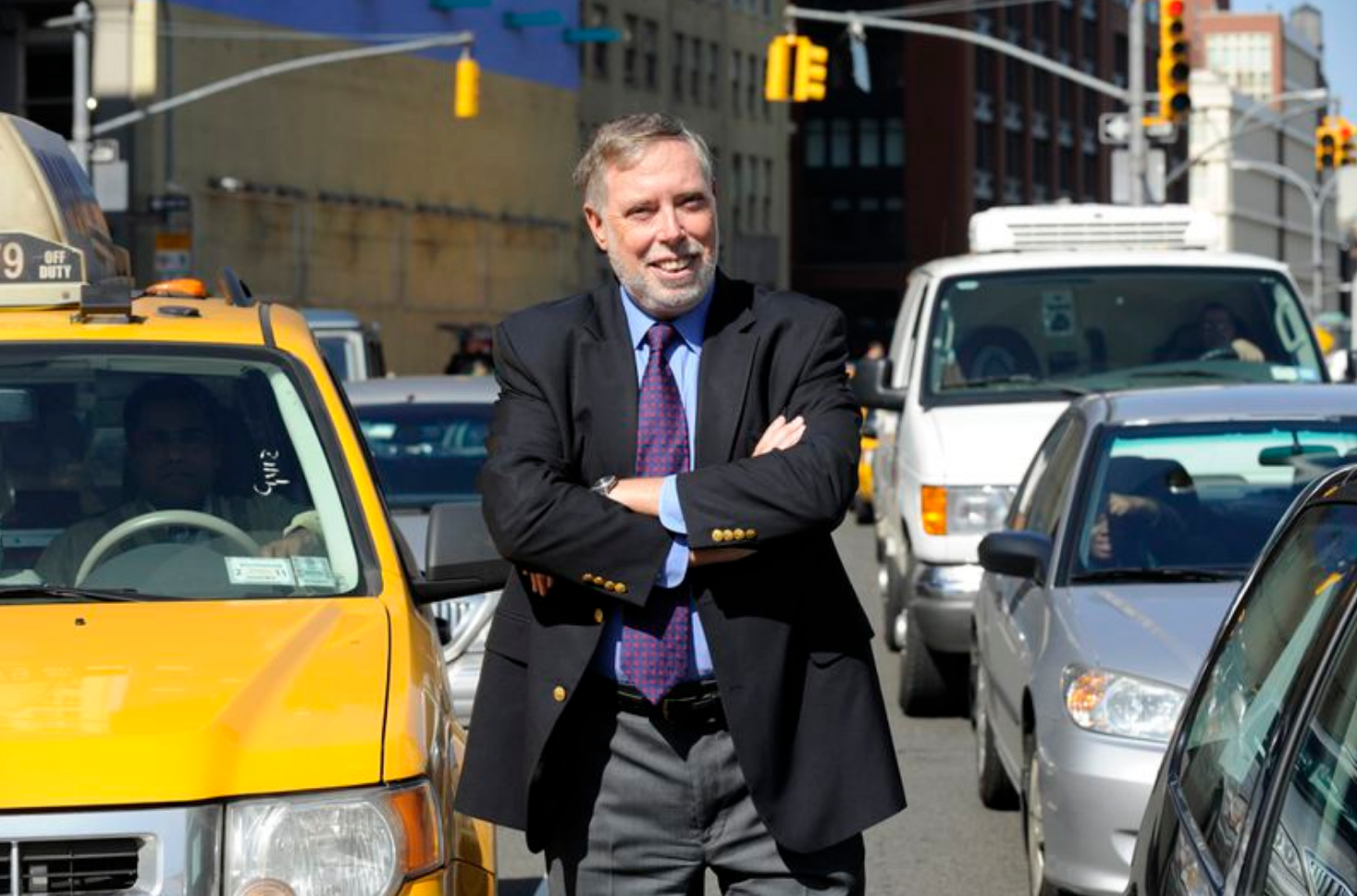You gotta hand it to “Gridlock” Sam Schwartz. At a time when COVID-19 is casting doubt on the viability of congestion pricing, the renowned former NYC Traffic Commissioner is doubling down. Literally.
In a Daily News op-ed last Friday, Schwartz sketched ways to make new tolls generate $2 billion a year in revenue needed to help revive and improve transit. That’s double the minimum “take” from congestion pricing prescribed in last year’s Albany budget. And the revenue is only half the benefit. Sam’s schema would also forestall a flood of car trips from commuters scared off of public transportation by fear of infection.
It’s a sketch, not a blueprint, so I won’t run down every item. The big takeaway from the op-ed is that the city and region’s most venerated traffic engineer (full disclosure: I’m a paid consultant on several Sam Schwartz Engineering projects) is affirming that congestion pricing, which he has championed for nearly half-a-century, is even more necessary (and beneficial) for New York City now than it was before the coronavirus upended everything.
The secret sauce in Sam’s latest confection is something I’ll call "occupancy pricing" for private cars. To begin, single-occupant vehicles crossing the East River to enter Manhattan’s Central Business District would have to use a tolled facility, i.e., a tunnel. Sam would like the tolls on the Queens-Midtown and Brooklyn-Battery tunnels to rise 20 percent next year before settling into parity with the CBD congestion charge for motor vehicles entering and leaving the CBD. Once congestion pricing starts up, heavier tolls would be levied on single-occupant vehicles. Cars with three and four people in them would pay progressively less.
This sort of sliding scale undermines the “pricing purity” of equal tolls for vehicles occupying the same amount of space. But given our exigent circumstances, the breach seems worth it, provided the tilt is structured as a premium for single-occupant vehicles and not a discount for high-occupant ones.
Once congestion pricing is in place, the lump-sum surcharge the MTA has been collecting on for-hire vehicle trips in Manhattan south of 96th Street could be converted to a time basis, generating further efficiencies, as I’ve advocated for some time.
Sam touts his program as needed more “for the revenue the transit system needs now and for the next year or two” than for the traffic relief. I see it a bit differently: both priorities are dire.
Yes, the Transit Authority and its MTA parent are hemorrhaging money, and any hopes for massive federal relief almost certainly require a demonstration of shared sacrifice, i.e., pricier congestion tolls than previously envisioned.
But no less worrying for the city's near-future is the specter of record numbers of single-occupant vehicles cramming into Midtown and Lower Manhattan as travel restrictions ease. Though no one can say yet whether transit dread will inject more cars into the traffic stream than will be removed by telecommuting and a possible "Escape from New York" mentality, it’s prudent to posit baseline traffic levels edging up, not down, before congestion pricing starts up.
Sam’s toolkit is bigger, and more fun, than just tolls. From his op-ed:
Walking and biking should be encouraged far more. There is no way to bike directly from New Jersey to the business district and the [cycle paths on the] East River bridges are either at capacity or not far from it. I have previously proposed three bike/pedestrian bridges going from Brooklyn, Queens and Weehawken to Manhattan.

The reference is to Sam’s 2010 brainchild (see drawing above) that he later withdrew from his Move NY blueprint in the face of opposition from Transportation Alternatives, who were put off by the idea of a toll to bike into Manhattan — even just 50 cents — and also feared the bridges might galvanize opposition to congestion pricing from drivers freaking out that their toll dollars would pay for cycling infrastructure.
Today, bicycling and walking and everything in between (e.g., scootering) are even more crucial for reviving and keeping New York moving. The new secret weapon — along with a vast expansion of on-street protected lanes — is electric-assist bicycles. These not only extend the range that ordinary folk will cycle, but have the potential to finally broaden cycle commuting's reach from a niche activity of energized (read: sweaty; also, privileged) people to a mass mode of travel.
Keep in mind, of course, that even if active commuting is destined to remain most prevalent in and near the CBD, expanding it opens up more space on buses and trains, facilitating the social distancing that commuters will insist on.
Sam Schwartz and I are contemporaries, born in the last quarter of 1947. I asked him today why he keeps at it, fighting for congestion pricing and allied ways to unsnarl New York’s streets rather than throwing up his hands and turning away.
“I’ve been at this for 50 years. I don’t see things in the short term," he said. "The coronavirus will be over in two years, max. New York City will not.
“Our transit and traffic problems will still be here, unless we act," he added. "When we’re in 2025, we’re going to wish the people in 2020 had done a better job.”
If Sam isn’t giving up, I’m not either.






